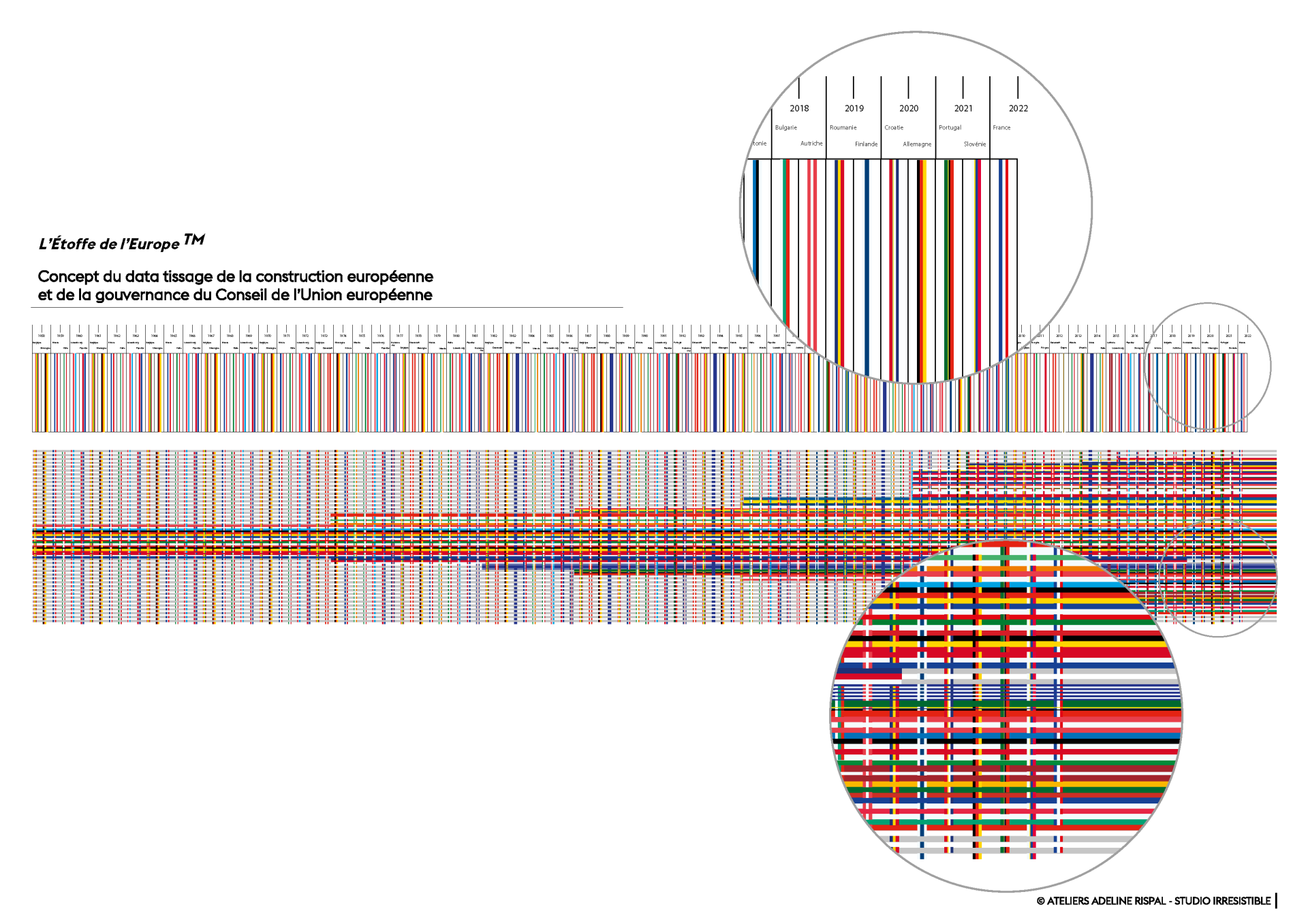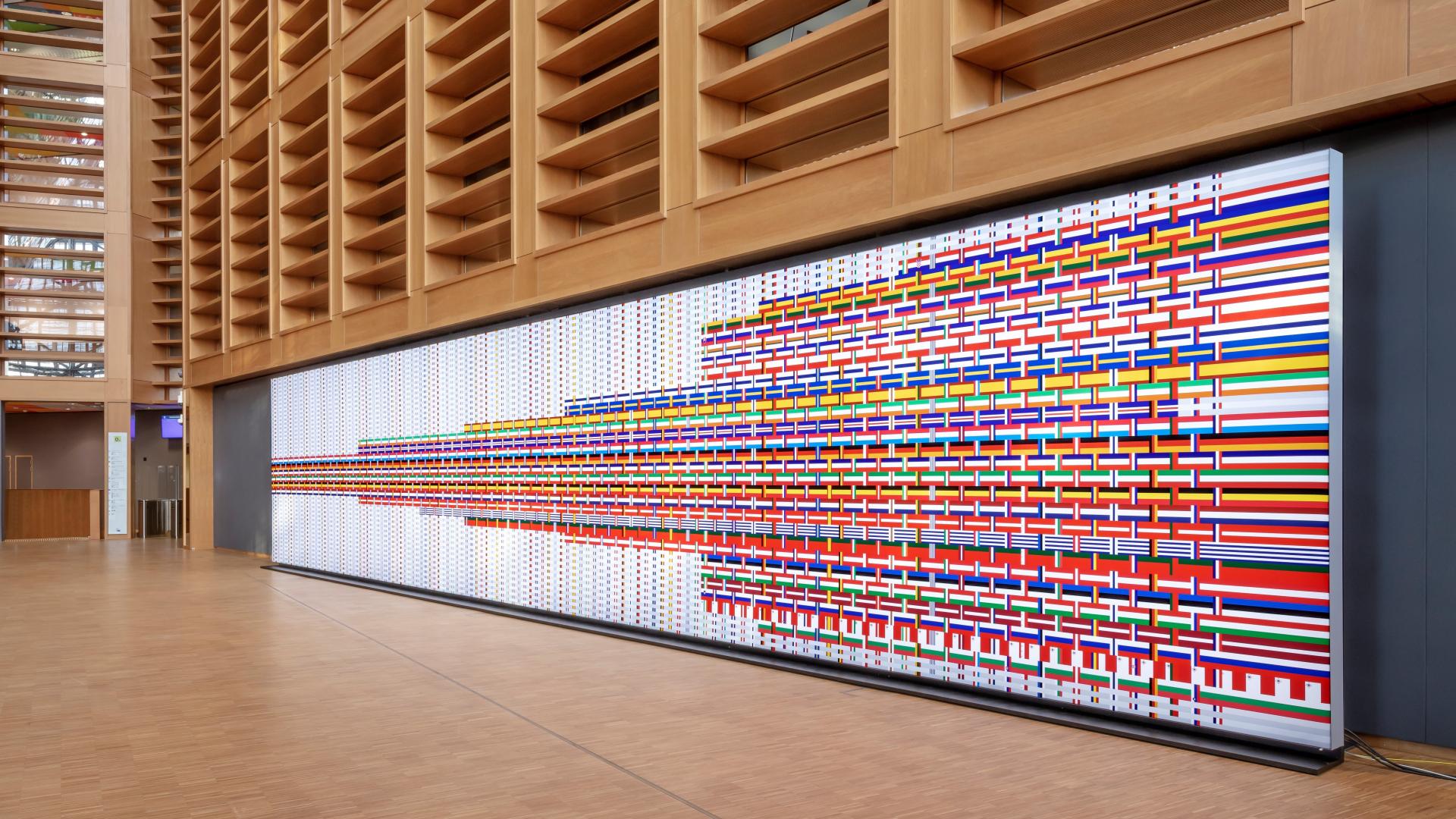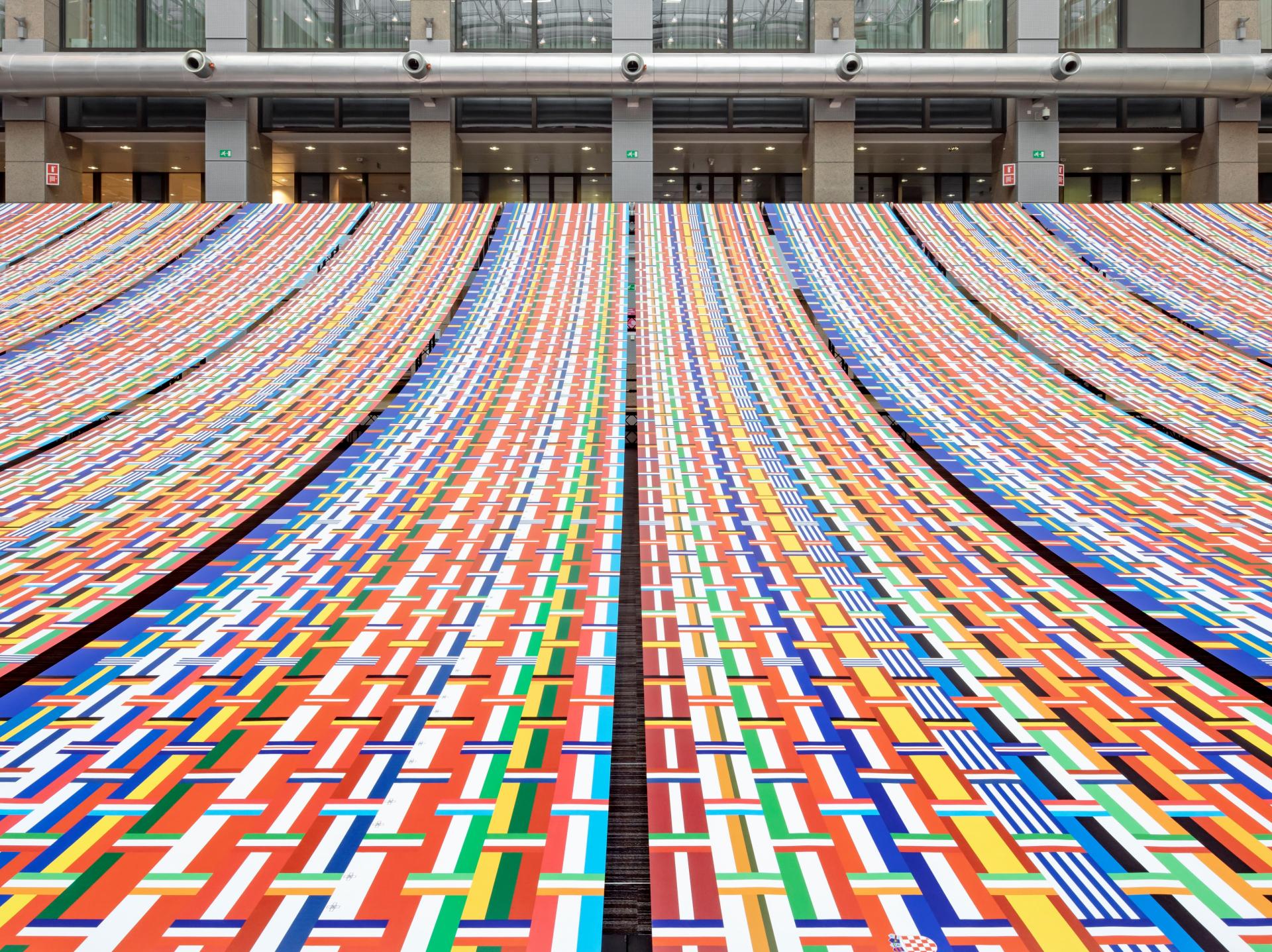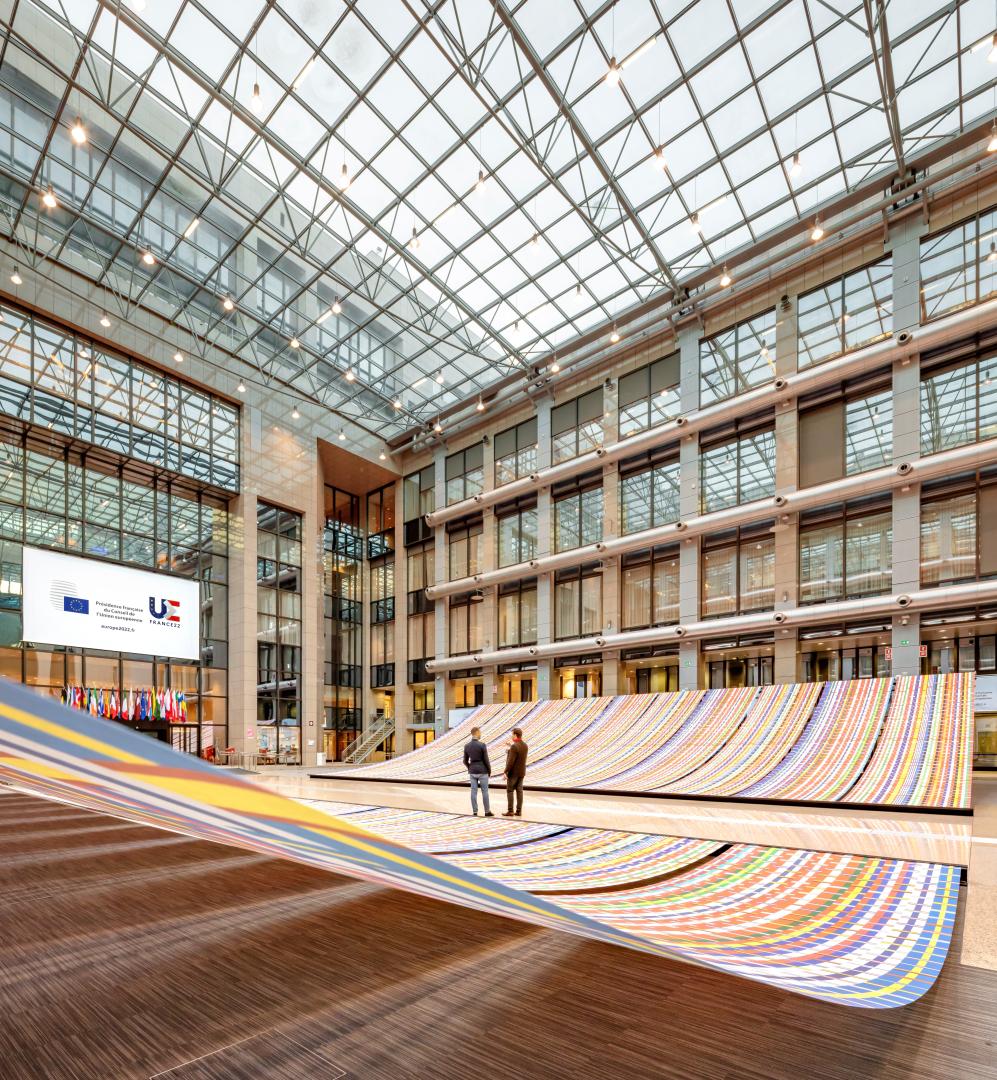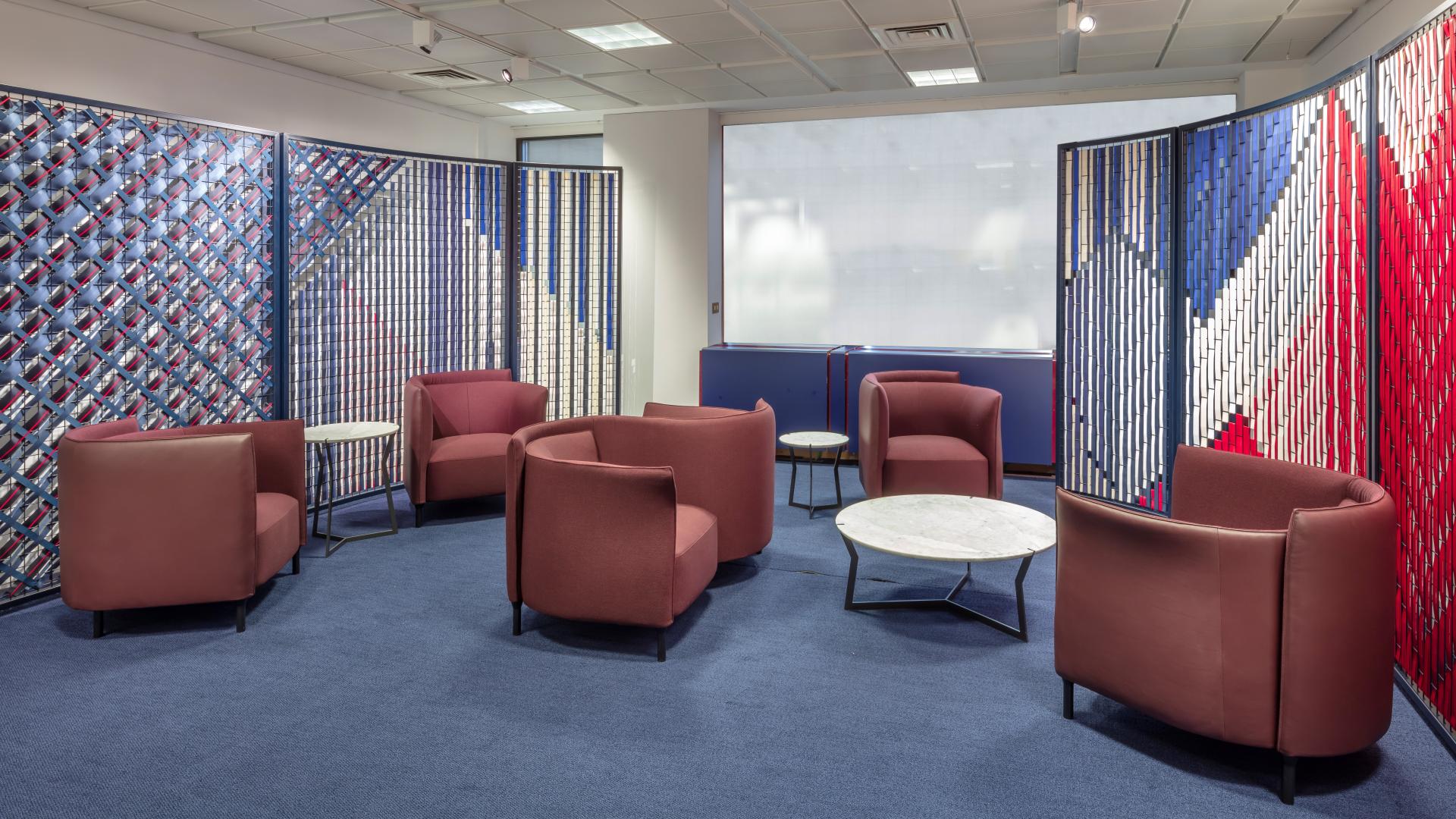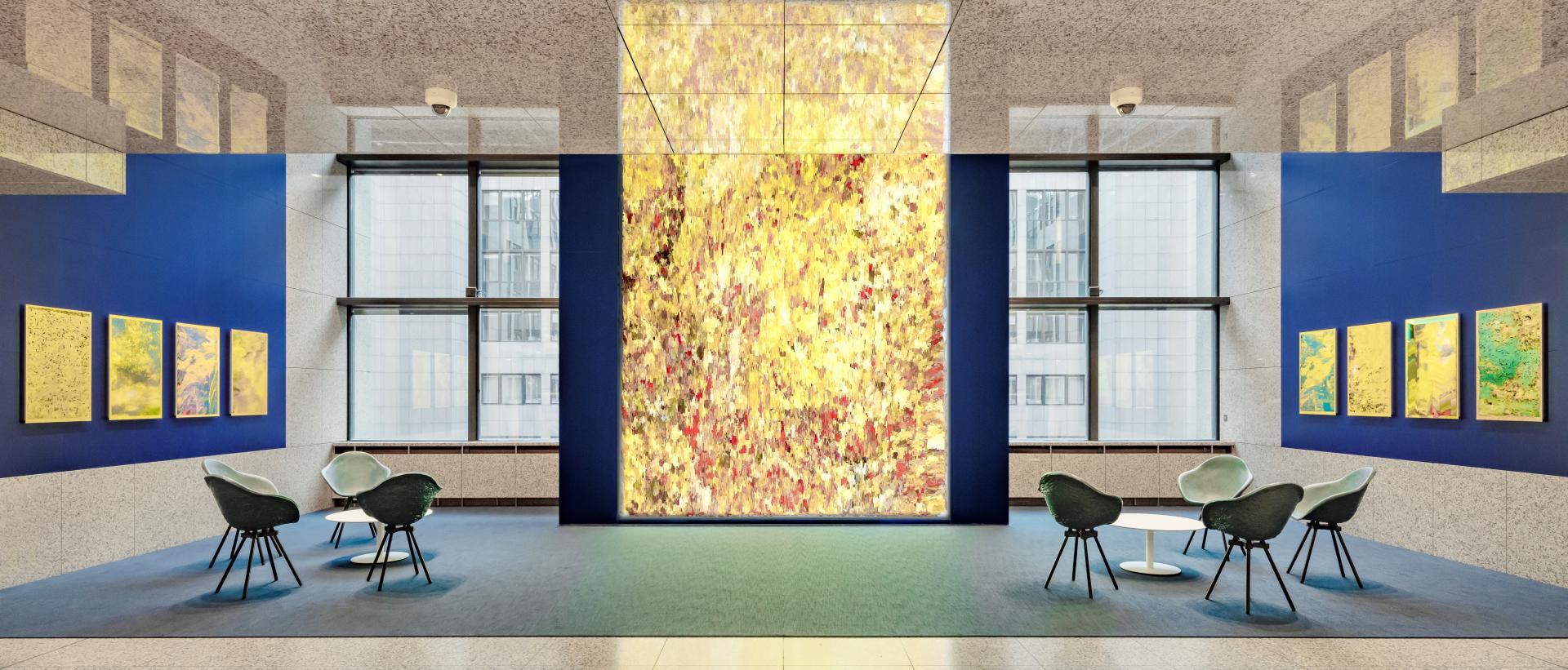L’Étoffe de l’Europe™
Basic information
Project Title
Full project title
Category
Project Description
Now more than ever, L’Étoffe de l’Europe™ really embodies the material that the 27 EU member states wove together using the 37 colours from their flags.
It both symbolizes the sense of belonging of 450 million European citizens and expresses their cultural diversity: together they are the weavers of a joint work formed by the interweaving of ties, relations between nations, flows of people and goods, data and information exchange networks.
Geographical Scope
Project Region
Urban or rural issues
Physical or other transformations
EU Programme or fund
Which funds
Description of the project
Summary
As of 1 January 2022, France will hold the presidency of the Council of the European Union for six months. As called for by Emmanuel Macron, this French Presidency is built around the key words: “recovery, strength and a sense of belonging”. It responds to the need to bring forth a richly diverse shared identity and to make the most of its full potential, in particular in relation to the environmental and digital transitions. It is based on these shared challenges that the design concept was created for the Justus Lipsius and Europa buildings of the seat of the Council of the European Union in Brussels. Like the majority of the projects that will be unveiled throughout this presidency across the EU, highlighting the immense creative capacity of its 27 Member States, L’Étoffe de l’Europe™ seeks to showcase French creativity and expertise in several areas, both artistic and technical.
Key objectives for sustainability
The project is exemplary in terms of its environmental approach, in keeping with the French Presidency’s political ambition. The project’s eco-design approach led to the pursuit of responsible solutions on all levels such as:
- Seeking out the simplest and least expensive economical techniques
- Carrying out work with limited disturbances (dust, noise, odours, cleanliness of the work site and its surroundings, etc.)
- Seeking out solutions with low consumption of raw materials, using 100% recyclable materials and/or incorporating their own recycling; for example, using the sheets of fabric in the Atrium to later create a new material
- Reducing greenhouse gas emissions: an effort to work towards carbon neutrality in all activities related to the work site (transport, storage, energy efficiency, etc.), for example:
- The structures supporting the sheets of fabric are rented in Belgium to avoid purchasing them and stored during the six times the installation is taken down and reassembled to minimize transport.
- The non-woven textiles are printed in Belgium by an ecologically responsible company.
- The furniture and screens are transported together.
- The use of light-weight materials (the 650 m2 of fabric only weigh 60 kg) and products that can be taken apart in order to reduce transport needs.
- All packaging and transport materials will be recycled at the end of the exhibition
- Waste from the work site has been severally reduced.
- The lighting concept limits energy consumption for digital and lighting elements as low-voltage lighting leads to additional energy savings
- The woven textiles used by the artist Jeanne Goutelle to make the screens in the “salon de la Présidence” are 100% made with waste materials from the French textile industry in Saint Etienne where she lives. (Upcycling and short circuit)
Key objectives for aesthetics and quality
The general concept of L’Étoffe de l’Europe™ is declined in as much variations as there are different spaces throughout the two buildings. In that way the project harmonizes with the architectural language of the two buildings, Justus Lipsius and Europa, in which it takes shape. It captures the force of each of the various spaces, makes use of its best qualities and overcomes its constraints to temporarily transform the spaces into settings that make an impact on their users as well as the media.
L’Étoffe de l’Europe™ expresses the general concept behind the project; it is the guiding theme that is explored in various forms and on different scales through the spaces in question.
This fabric reflects the strength and creativity of the 27 countries that make up the European Union. It highlights the same sense of belonging of its citizens as well as the close ties between the nations in the European recovery. (766)
As for the user’s experience point of view,
While going back, we experienced successfully that the very concept of L’Étoffe de l’Europe™ provides a real sensitive and cognitive emotion for each of the communities of officials who work in these buildings and that each of these colourful variations brings an added value of cheerfulness and joy to this noble political institution.
The design provides an experience to be part of Europe in a very physical sense, being surrounded by this 650 m2 of mixing colors in Justus Lipsus building. In Europa building, the artwork is also a data-weaving of the construction of the European Union, fitting the scale of time and the successive entries of new members in the European Union. It shows by a process of creation wich takes a long time and is complex, the time and the complexity that this great European project needs to exist.
Key objectives for inclusion
The project started as an international competition opened to architects from all European Union. It's the first time France is proceeding this way. The equality and opening to diversity were at the heart of the project. The project has proved to be inclusive in its very conception since each of the coloured ribbons relating to each country has been the subject of protocol and diplomatic validation by the embassies in France of each EU countries. It is, by its very nature, the expression of a project of civic commitment on a European scale. 4 creators made this concept which is exceptional in a time of hyper-impersonating to share the credit of a creation this way in a sense of equality. In terms of inclusion, from the beginning of the project, we wanted to involve and promote artists and creators from various fields, including young artists. The furniture has been created by French creators in partnership with the French Mobilier National, a weaving creator Jeanne Goutelle and the artist Jacques Perconte. As the project is deployed in secure EU buildings, it is only partially accessible to the general public. We have voluntarily compensated this by offering a maximum of visibility and sharing of the project on the web and social networks, in connection with our client. To this end, three video clips were made and 27 instagram stickers in the colours of the member states were delivered for distribution on networks of all countries. It is worth noting that a 28th vignette was produced at the beginning of March in the colours of France and Ukraine, labelled L’Étoffe de l’Europe™ to mark the solidarity between EU and Ukraine desired by the French Presidency of the Council of the EU. It is important to underline that we have voluntarily sacred a budget in the global financial envelope of the project to propose, with a dedicated curator, an inclusive exhibition not originally planned, shedding light on 10 artists of the young French artistic scene living in Belgium.
Results in relation to category
L’Étoffe de l’Europe™, embodies this very feeling of belonging to the same community for each and every European citizen, whatever their nationality. A common belonging to Europe, but without ignoring the richness of our cultural diversities. In this sense, it combines both our individuality and our belonging. It also reflects the long and arduous process of building this common work. Like a loom, the web has been woven since 1958 (when Europe was founded with 6 countries) and has expanded to the present day (27 nations) with the 128 half-year periods marked by changes in the governance of the Council of the European Union. Made of a single piece that is still growing (because the future is ahead of us), L’Étoffe de l’Europe™ is unique for all and different for everyone according to the viewpoints of its observers. We are all part of it, whether we are Heads of State of a nation, senior European officials or ordinary citizens of a European nation, and everyone can relate to it!
How Citizens benefit
The project in its conception is the result of a public tender that our team won among more than 35 applications and 3 teams that were invited to compete between March and May 2021.
The design of the ribbons in the colours of the 27 member countries was the subject of a protocol and diplomatic validation with the embassies in France of the countries concerned.
The project for its realisation has been the subject of a public tender between August and September 2021 for the selection of companies and technical know-how necessary for its implementation. The 10 young artistic talents of the French scene living in Belgium, for the exhibition "décors and landscapes" was the subject of a pre-selection by a jury under the curatorship of Lola Meotti. In this respect, our project often calls for the involvement of citizens and/or their representatives.
Physical or other transformations
Innovative character
To the public commission of an eminently political project, we have singularly provided an aesthetic and artistic response. This is unprecedented. A second innovation embodied in our project is that a scenographic concept embodied in an artistic project is recognised as a collaborative work. This is a very recent legal recognition. Finally, last but not least, the success of L’Étoffe de l’Europe™ project has led us to register it as a commercial trademark: this is a first in the state of our knowledge.
Learning transferred to other parties
Indeed, beyond the Brussels arrangements governed by the framework and time limit (6 months) of the French presidency of the Council of the European Union, the success of the concept has already generated a certain number of graphic and commercial variations: instagram stickers for all the European nations, a special instagram sticker in solidarity with Ukraine, limited edition screen prints, scarves, bags, umbrellas, totebags, computer protection covers, etc. (images on request)
It seems that this is only the beginning as we are currently being approached by institutions or publishers such as the Nice-Côte d'Azur University.

